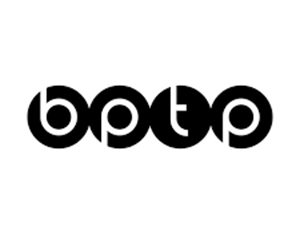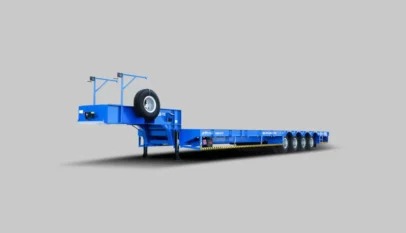Mining ERP: Streamlining Operations for Enhanced Efficiency in Resource Extraction
Mining ERP systems are designed to streamline operations, enhance productivity, and improve decision-making in the mining industry. These systems provide an integrated approach to managing processes such as finance, supply chain, and human resources, ensuring that resources are used efficiently and effectively.
The complexity of mining operations necessitates advanced solutions that can handle unique challenges. By leveraging mining ERP, companies can gain real-time insights into their operations, reducing downtime and increasing profitability.
As mining companies face increasing competition and regulatory pressures, the importance of adopting robust ERP solutions becomes clear. Effective mining ERP not only optimizes existing processes but also positions companies for future growth and innovation.
Essential Features of Mining ERP Systems
Mining ERP systems offer a range of essential features that streamline operations and enhance productivity. These functionalities cater to various aspects of the mining process, from managing resources to ensuring compliance.
Inventory Management
Effective inventory management is vital for mining operations. A robust ERP system tracks raw materials, spare parts, and equipment, ensuring that inventory levels are optimized.
Key functionalities include:
- Real-Time Tracking: Allows for continuous monitoring of stock levels.
- Reorder Alerts: Notifies management when stocks fall below a preset level.
- Forecasting Tools: Predicts future inventory needs based on usage patterns.
These features help minimize waste and reduce costs, enabling better planning and resource allocation.
Supply Chain Optimization
Optimizing the supply chain is essential for mining efficiency. ERP systems facilitate a seamless flow of materials from suppliers to production sites.
Important aspects include:
- Supplier Management: Maintains detailed records of supplier performance and reliability.
- Logistics Coordination: Streamlines transportation and distribution to ensure timely deliveries.
- Demand Planning: Aligns supply with demand forecasts to avoid shortages or overstock situations.
A well-optimized supply chain enhances overall operational efficiency and reduces delays.
Financial Management
Financial management features in mining ERP systems support budgeting, forecasting, and financial reporting. These tools enable mining companies to maintain fiscal health.
Critical components include:
- Cost Control: Tracks costs related to labor, materials, and operations.
- Budgeting Tools: Aids in creating and adjusting budgets based on changing conditions.
- Financial Reporting: Generates real-time reports for better visibility into financial performance.
With these tools, management can make informed financial decisions that support organizational objectives.
Project and Asset Management
Managing projects and assets is crucial in the mining sector. ERP systems provide tools to oversee the lifecycle of projects and assets efficiently.
Key functions include:
- Project Tracking: Monitors progress, budgets, and timelines of ongoing projects.
- Asset Performance Monitoring: Assesses the performance and maintenance needs of equipment.
- Risk Management: Identifies potential risks associated with projects and assets.
These features ensure better resource utilization and help in delivering projects on time and within budget.
Compliance and Reporting
Meeting regulatory requirements is essential for mining operations. ERP systems offer comprehensive tools for compliance and reporting.
Essential elements include:
- Regulatory Compliance Tracking: Monitors changes in regulations that affect operations.
- Audit Trails: Maintains records of operational processes for transparency.
- Customizable Reporting: Generates reports tailored to meet specific compliance requirements.
These functionalities help mining companies adhere to legal standards and mitigate the risk of non-compliance.
Implementation Strategies for Mining ERP
Effective implementation of Mining ERP systems involves careful planning and execution. Key aspects include understanding the specific needs of the mining operation, customizing the solution to fit operational workflows, ensuring adequate training for users, and establishing robust performance monitoring.
Needs Assessment and Planning
Conducting a thorough needs assessment is crucial for successful Mining ERP implementation. Stakeholders should identify operational challenges and desired outcomes. This may involve interviews, surveys, and process mapping.
A clear project plan should outline objectives, timelines, and resources. This helps in aligning the ERP functionality with business goals. Companies might benefit from forming a cross-functional team to oversee the assessment and planning phases.
Key questions to consider include:
- What specific processes need improvement?
- How will the ERP integrate with existing systems?
- What budget constraints exist?
Customization and Integration
Customization of the Mining ERP system allows it to meet the unique requirements of the mining industry. This includes tailoring modules for inventory management, production tracking, and regulatory compliance.
Integration with existing software is vital. This may involve connecting the ERP system with tools for geology, fleet management, and environmental monitoring. A seamless integration ensures data flows smoothly across platforms, enhancing decision-making and efficiency.
Important considerations include:
- Evaluating the compatibility of systems.
- Determining the extent of customization needed.
- Planning for potential data migration challenges.
Training and Support
Training is essential to ensure that staff can utilize the Mining ERP system effectively. Training programs should address various user levels, from operational personnel to management.
Organizations should invest in ongoing support. This can include access to help desks, user manuals, and online resources. Regular refreshers and updates keep users informed about new features and best practices.
Training methods may vary, such as:
- In-person workshops.
- Online courses.
- Peer-to-peer training sessions.
Performance Monitoring
Establishing performance monitoring mechanisms helps track the effectiveness of the Mining ERP system. Key performance indicators (KPIs) should be defined to assess processes such as production efficiency, equipment utilization, and cost management.
Regular reviews of these metrics allow for adjustments in operations. This proactive approach can identify issues before they escalate, leading to better management decisions.
Components of a monitoring strategy may include:
- Scheduled reports for management.
- Dashboards for real-time data access.
- Feedback loops for continuous improvement.
Bathroom Remodel Hamilton: Elevate Your Space with Expert Design Tips
Bathroom remodels in Hamilton are becoming increasingly popular as homeowners seek to enha…













